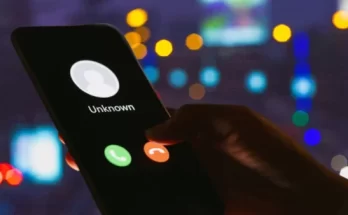Photography is about light. To let the camera “see” what you wish, you have instruments controlling how much light arrives at the camera sensor: the opening and shade speed controls. With excessively minimal light, your photograph will be excessively dull. The smart diploma in photography stated that with an excess of light, it will be excessively brilliant. In the two cases a few subtleties will be lost. You use gap and screen speed to accomplish the best possible presentation, while considering some significant symptoms you ought to know about.
Envision that you are glancing through a little round gap in a fence. What amount of the scene behind the fence will you see and understand? I would state it relies upon two components:
How enormous the gap is. The bigger it is, the more you will see.
Same story occurs in a photograph camera. I am presently most likely gambling to get a negative assessment of my material science information, which would tragically be very reasonable… Be that as it may, in spite of the fact that the physical reasons may contrast, the calculated examination is by all accounts very satisfactory. When shooting with a photograph camera, you let the sensor see the scene through an opening in the focal point called gap. The bigger this opening is, the more light arrives at the sensor. Ordinarily the sensor is shut by a drape called screen. When shooting, the shade opens, light arrives at the sensor through the gap, and afterward it closes once more. The more extended the opening endures, the more light arrives at the sensor. This time is called shade speed.
DSLR camera structure
When shooting, you will likely uncover the perfect measure of light to the camera sensor (that is the reason it is called presentation). On the off chance that you give lacking measure of light, the photograph will be excessively dull. On the off chance that you uncover an excess of light, the photograph will be excessively brilliant.
The bigger the deviation from the ordinary introduction is, the more possibility you need to pitifully lose picture information. Programming post-handling can fix the apparent presentation (for instance make a dim photograph look more brilliant), yet it can’t re-make the picture information lost while shooting.
For instance, a typical scene photography issue is losing mists in a splendid sky. At the point when it is overexposed (an excessive amount of light arrives at the sensor), the entire sky turns out to be totally white, and the mists can’t be separated any more. Then again, with underexposure (too minimal light arrives at the sensor), shadowed pieces of the picture lose subtleties, become totally dark. Programming can’t protect such subtleties, since they don’t exist in the first picture.
Hence, it is critical to get the presentation right when shooting. Be that as it may, what is “correct”? Does it signify “the photograph must look so brilliant/dim as I need it to be on the last photo”? No! By “right” I imply that the introduction must be to such an extent that the most extreme number of the scene subtleties is caught by the sensor. Recording the visual data, however much as could be expected – that is the thing that the camera is for! At that point you present these information in the manner you like, make the last photo in Photo Sense (see likewise why programming post-handling is fundamental). Actually, the best appropriately uncovered photographs frequently look appallingly dull before programming post-handling.
Luckily current photograph cameras frequently give precise programmed introduction assessment with the fashion photography courses, actually covering the most ideal qualities? Why not to amplify the opening gap twice and split the shade speed? The measure of light arriving at the sensor will be the equivalent, along these lines it doesn’t have any effect, isn’t that right? All things considered, in truth it does.
Opening and profundity of field
As clarified above, opening characterizes how enormous the gap is through which the sensor sees the world. In photography, opening is estimated in units called F-numbers, F-stops or whatever else with this F-. Without going into insights concerning what precisely this F-is (I would need to find it myself to clarify, material science once more), all you truly need to know is the accompanying. The littler the F-number is, the bigger the opening gap is, and the more light arrives at the sensor. Starting now and into the foreseeable future by “enormous opening” I will mean a huge gap (and a little F-number), and the other way around by “little gap”.
Screen speed
Screen speed is the time while the shade drapery is open, presenting the sensor to light. Try not to stress; there are no alarming F-numbers here :- ). Shade speed is estimated in ordinary seconds. At brilliant sunshine, we typically utilize hundredths of a second. At the point when overcast, in conceal and so on., may be tenths of a second. Around evening time it comes to entire seconds.



